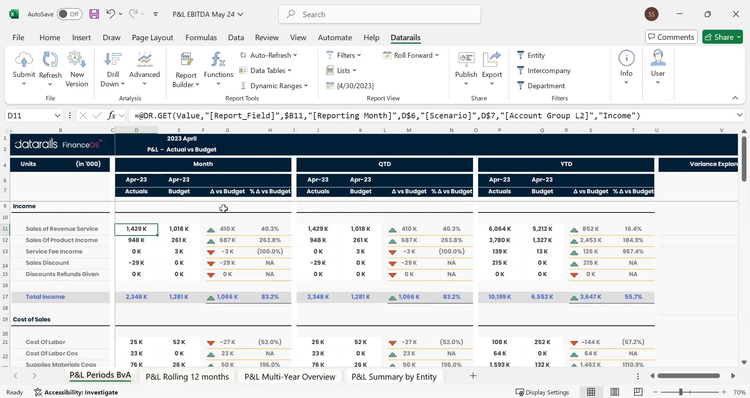The Best Business Budgeting Software
Budgeting software makes managing finances easier, whether you’re running a retail store or manufacturing products. We’ve reviewed a range of tools with features like QuickBooks integration, advanced forecasting, and support for different budgeting scenarios–whether it’s top-down, bottom-up, or zero-based.
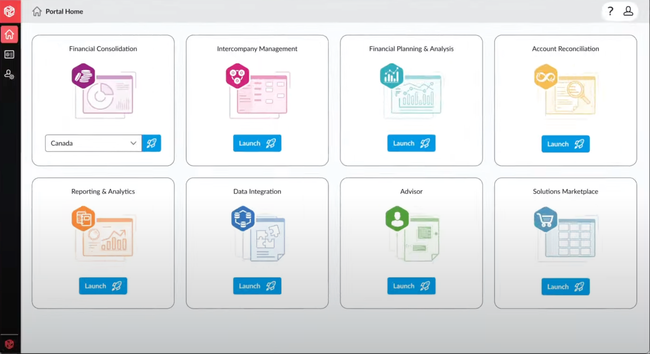
- Cloud and on-premise implementation
- Spreadsheet-style interface
- Supports all types of financial and non-financial budgeting
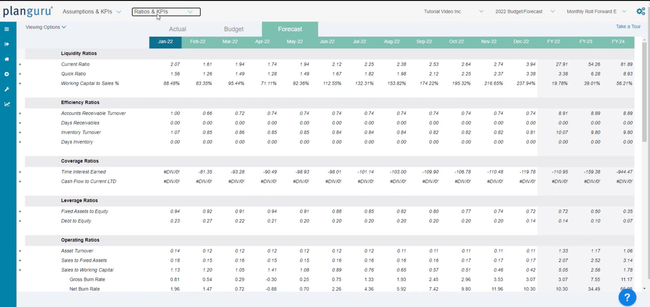
- Budget and forecast for up to 10 years using 20+ standard forecasting methods
- Inegrates with QuickBooks, QuickBooks Online, Xero, and Excel
- Offers numerous training videos
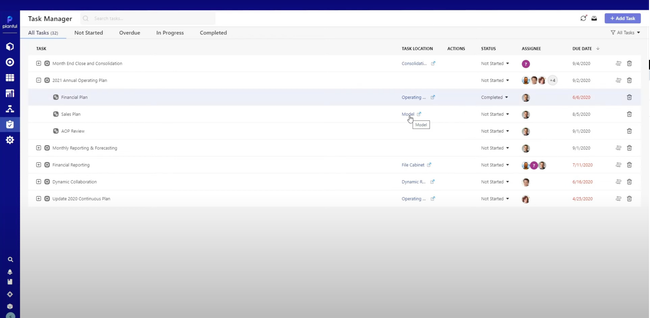
- Automates planning, reporting, and consolidation
- Integrates with QuickBooks, Sage Intacct, etc.
Business budgeting software includes tools such as strategic planning, projections, budgeting, data automation, and team collaboration. We used our advanced review methodology to evaluate top solutions for businesses of all sizes.
- Prophix: Best for Enterprises
- PlanGuru: An Affordable Option
- Planful: Best AI-Driven Tools
- OneStream: Best for Corporate Finance
- Datarails: Best for Mid-Sized Companies
- Workday Adaptive Planning: Best Scalability
- Budgyt: Best Usability
- Planning Maestro by Centage: Best for Multi-Location Companies
- Anaplan: Best Sales Module
Prophix - Best for Enterprises
Prophix is an effective budgeting software for enterprises due to its features designed to streamline complex processes. These include Online Analytical Processing (OLAP) technology, as these databases are built to handle large amounts of information typical for larger companies. Enterprises can use this tech for multi-dimensional planning across business variables, from account type to organization, on a spreadsheet-style interface. It also automates data collection and consolidation with top-down and bottom-up capabilities for greater flexibility in budgeting.
The software fosters team collaboration, offering functionalities like task ownership and deadline reminders to keep everyone aligned. Additionally, Prophix uses AI to automate reporting and provide deep data insights, freeing up more time for managers. It also features automated maintenance and updates, providing actionable insights through personalized dashboards. While its tools are effective, we don’t like that Prophix’s pricing details are not readily available.
PlanGuru - An Affordable Option
PlanGuru is a great budgeting and forecasting tool for businesses that have outgrown basic budgeting capabilities in systems like QuickBooks Online and Xero. It offers cash flow projections, financial ratios, and debt modelling for businesses that need a more structured approach to financial planning than what basic accounting systems offer.
For small businesses unsure of their company’s value, PlanGuru also includes a business valuation tool that helps estimate worth based on projected cash flows and industry benchmarks, giving owners better visibility for strategic planning or funding discussions. Additionally, as the company grows and expands, PlanGuru supports multi-department and multi-entity consolidation, making it easy to pull data from existing Excel spreadsheets or accounting platforms.
The platform does have its flaws; the user interface feels outdated, and the system lacks more dynamic reporting for enterprise-level growth. However, PlanGuru remains one of the most affordable budgeting solutions available. Its annual plan for single-entity businesses is $83/month, and for multi-department or entity organizations, it is $250/month.
Planful - Best AI-Driven Tools
Planful, formerly Host Analytics, offers the built-in Predict Suite, which blends artificial intelligence with forecasting tools. These tools shift your company from reactive budgeting to a continuous planning cycle, helping your team spot trends and anomalies early for quick resolution.
First, Planful Predict: Signals tool uses AI to scan budget lines for discrepancies that deviate from historical patterns. For example, with just a click, the “Check All Lines” function highlights any unexpected variances across your budget. Click on the flagged numbers to drill down into the Signal Context screen, where historical actuals, forecasted data, and variance are all displayed for comparison.
From there, it’s easy to leave questions for budget owners or tag colleagues. You can also select the “Resolve Signals” option to show this is a known issue, whether it’s a clerical error, formula miscalculation, or immaterial difference. Integrating AI into the budgeting process means your finance team can spend less time manually combing through reports and spreadsheets for errors, which means shorter planning cycles.
Additionally, the Planful Predict: Projections feature leverages AI to analyze your past data with as little as three years of trends. Then, you can automatically fill budget cells with predictions using historical trends and auto-creating baseline forecasts for expenses, revenue, and workforce planning.
With such granular features, Planful can cost anywhere from $15,000 to $20,000 per year, making it more applicable for mid-market companies.
OneStream - Best for Corporate Finance
OneStream is a good choice for corporate finance because of its features that support extended Planning and Analysis (xP&A) across multiple departments like sales, marketing, and supply chain. The software offers a unified platform for data-driven insights, allowing continuous planning and performance management. Features like agile planning and scenarios help corporations adapt to market changes, while its predictive analytics instantly generate budgets and forecasts without requiring technical expertise.
We also like Onestream’s “extensible dimensionality” tool, which enables granular operational plans to coexist with corporate and line-of-business plans, providing a comprehensive solution for complex corporate financial needs. Its “what-if” driver-based planning immediately displays the impact of decisions, enabling faster and more decisive choices. However, new users may be overwhelmed during the initial setup because of the abundance of features and complex dashboards.
Datarails - Best for Mid-Sized Companies
Datarails best offers financial planning and analysis (FP&A) tools and project collaboration. It automates tasks like preparing balance sheets and cash flow statements while consolidating data from all departments into one place. The consolidation helps growing businesses save time and resources by analyzing metrics like sales or key variance drivers.
For businesses that don’t wish to leave Excel, Datarials Flex is a direct Excel add-in for FP&A. It includes analysis tools such as variance analysis and drill-down without leaving the program. This feature also helps with onboarding, as users can keep all existing spreadsheets without moving them. Datarails isn’t the best fit for enterprises, as it can have issues handling large data volumes.
Workday Adaptive Planning - Best Scalability
Workday Adaptive Planning provides versatile planning capabilities and real-time adaptiveness. It supports expansion and can handle complex data inputs from organizations with thousands of users. The software breaks down silos with features like rolling forecasts and various budgeting approaches (top-down, bottom-up, incremental, and zero-based), allowing for a more cohesive and agile planning process.
Its driver-based expense planning and seamless integration with other enterprise solutions ensure effective, real-time data visualization. We like its different planning modules, which include financial, workforce, and operational, enabling businesses to gain insights into all facets of the company. One downside is that the initial implementation can be time-consuming while creating complex business models.
Budgyt - Best Usability
Budgyt has a user-friendly interface and solid budgeting features, making it ideal for small—to mid-sized businesses. All data can be controlled from one place, enabling easy navigation. Also, it hyperlinks all budgeted data so users can search for specific terms. Budgyt exports all reports to Excel and formats them into particular categories, like departments.
Additionally, Budgyt allows unlimited users on every plan, allowing collaboration from every department and team member. It also automates budget creation and tracking processes, saving businesses time and reducing errors caused by manual data entry. One sticking point we found is that due to its organizational tools, users may need to clean up their data while entering it into the system.
Planning Maestro by Centage - Best for Multi-Location Companies
Planning Maestro, previously known as Budget Maestro, efficiently consolidates P&Ls for multi-location businesses. It offers data integration with real-time access and allows businesses to view all P&Ls in one place. This is ideal for multi-entity companies such as hotel chains gathering financial data from dozens of different properties.
In addition, its forecasting model is quite effective. It offers testing and predicting multiple scenarios, evaluating budgets, and visualizing financial data. Its forecasting tools help businesses predict outcomes and set realistic budget goals. While its tools are helpful, a significant downside to Centage is audit trails are only available in the most expensive “enterprise” plan.
Anaplan - Best Sales Module
Anaplan offers strong budgeting and planning modules, as well as its other features that go beyond, such as sales, marketing, and compensation modeling. Specifically, the sales module lets businesses gain insight into sales performance with models using specific metrics like account size, individual rep history, and account potential.
Anaplan’s long-range planning and scenario modeling can help companies predict their financial future based on data. Its xP&A feature lets enterprises consolidate financial information into one place, allowing CFOs to make more educated decisions. Anaplan best suits enterprise-level businesses, as it offers extensive features at a high price tag.
What is Business Budgeting Software?
Business budgeting software is a digital tool designed to automate and streamline the budgeting process. It provides a centralized platform for financial planning, tracking income and expenses, and forecasting future financial scenarios.
Unlike traditional methods such as spreadsheets, which are often error-prone and time-consuming, these tools offer advanced features like real-time data updates and integration with other financial tools to make financial management more accurate and efficient.
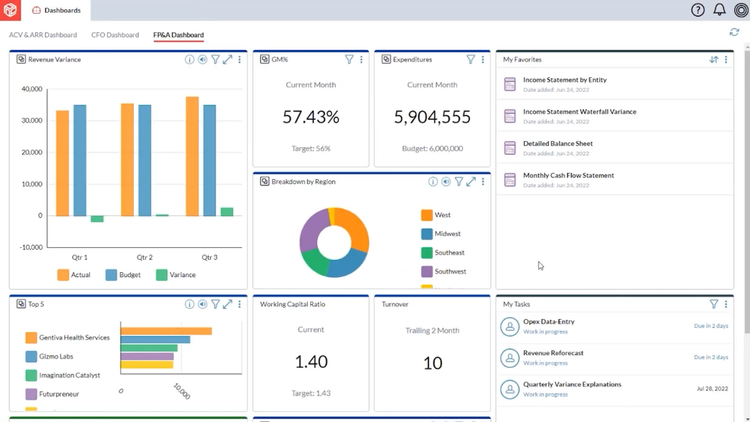
How to Choose Software
Choosing the correct software for your business hinges on several factors, including features, pricing, scalability, financial complexity, and integration options.
Don’t forget to take advantage of free trials and discounts, evaluate the complexity of your finances, and review integrations to find the best fit for your business.
- Ease of Use: Look for interfaces that are intuitive and don’t require a steep learning curve. You don’t want to spend weeks training your team to use the software.
- Integration: The ability to sync with other tools you’re already using (like QuickBooks or even Excel) is a big plus. The smoother the integration, the less hassle you’ll have transferring data.
- Scalability: You want software that will grow with you. If you’re a small business now but plan to expand, choose software that offers additional features you can unlock as you grow.
- Customization: The software should allow you to customize reports, dashboards, and other features according to your needs.
- Real-Time Updates: Real-time data can provide you with the most current financial picture, which is crucial for making informed decisions.
- Affordability: Watch out for hidden costs like set-up fees, additional charges for premium features, or limits on the number of users. Get a full understanding of the pricing model.
- Security: Your financial data is sensitive. Ensure the software follows best practices for data encryption and security protocols.
- Customer Support: Effective customer support can make the transition much easier, especially if you’re new to budgeting software.
- Trial Period: A free trial period or a money-back guarantee can give you peace of mind and ensure the software suits your needs before fully committing.
Key Features
- Automated Data Collection: These tools pull in information from accounting systems, spreadsheets, and other business applications, ensuring your budgets are built on accurate data.
- Comprehensive Reporting: Generate budget variance reports, cash flow forecasts, and other key performance indicators (KPIs) at the click of a button. Customizable dashboards allow teams to visualize KPIs and drill down into line-item details for granular analysis.
- Forecasting & Scenario Planning: Forecast modelling allows you to project future financial performance based on historical data. Run multiple scenarios and quickly adjust assumptions to see how the forecast changes or how decisions affect your bottom line.
- Multi-entity & Multi-Location Consolidation: Quickly pull in and consolidate data across multiple departments or locations to unify financial planning and budgeting. Can also be used to simplify intercompany transactions.
- Integrations: Connect seamlessly with accounting platforms, ERPs, and Excel. This ensures smooth data flow and minimizes the need for manual imports or redundant data entry.
- Customizable Dashboards: Access up-to-date financial snapshots through live dashboards. Tailor views to highlight the metrics and reports that matter most to your team, ensuring faster, data-driven decisions.
- User Access & Permissions Control: Manage who sees what. Set role-based permissions to ensure sensitive financial data is only accessible to authorized team members while enabling broad collaboration where appropriate.
- Workflow Mapping & Collaboration: Design and visualize your budgeting workflows within the software. Map out approval processes, task dependencies, and timelines to improve collaboration and automate every step of the budgeting cycle.
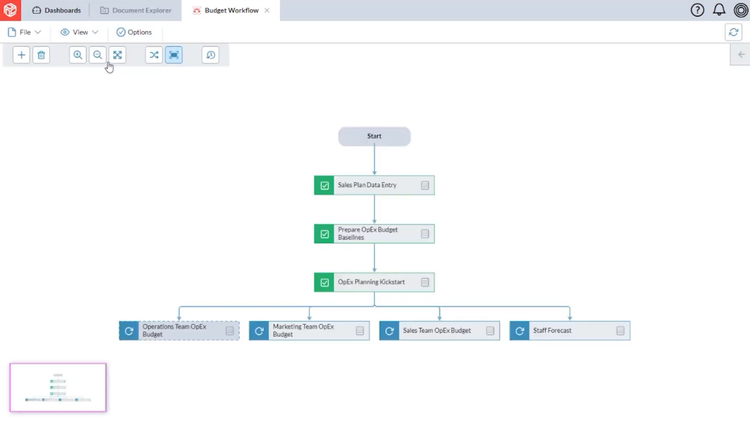
Budgeting Software Trends
- AI-Powered Forecasting: More platforms are integrating artificial intelligence to automate forecasting, detect anomalies, and provide predictive insights, reducing the time to create and analyze budgets.
- Excel & Google Sheets Integration: Businesses want the flexibility of spreadsheets with the power of FP&A tools, driving demand for software that syncs natively with Excel and Google Sheets.
- Continuous Planning Cycles: Companies are shifting from annual budgeting to rolling forecasts and continuous planning to stay agile in dynamic markets.
- Cloud-Based Collaboration: Remote and hybrid work models have accelerated the need for cloud-native solutions that allow real-time collaboration across departments.
- Scenario Modeling & What-If Analysis: Volatility in markets has made scenario planning a critical feature, enabling businesses to quickly test different financial outcomes and strategies.
